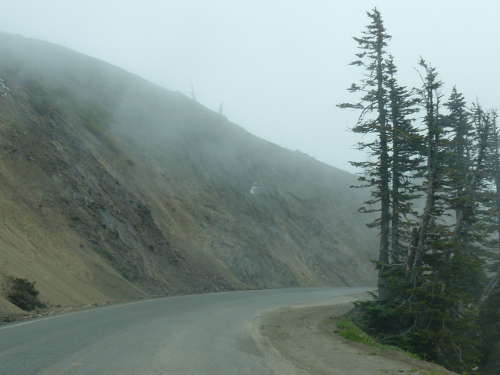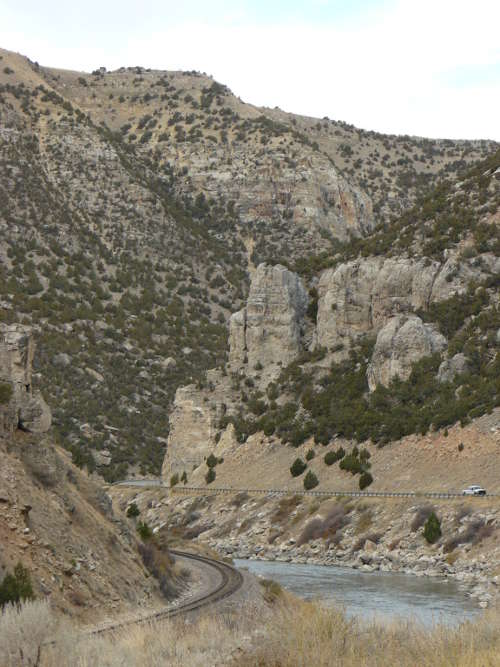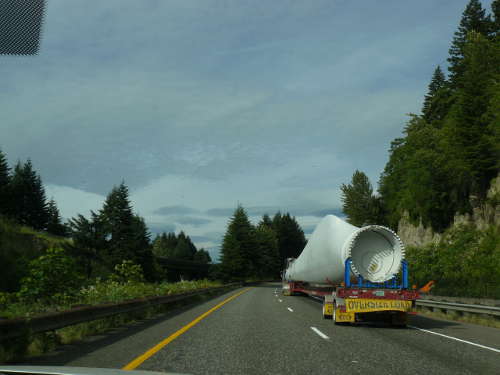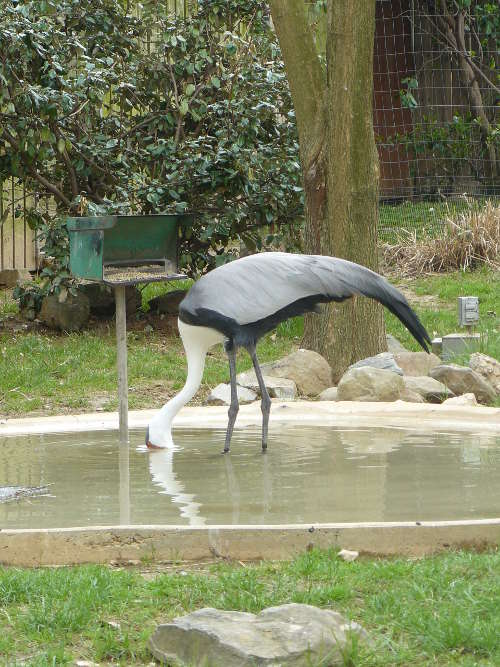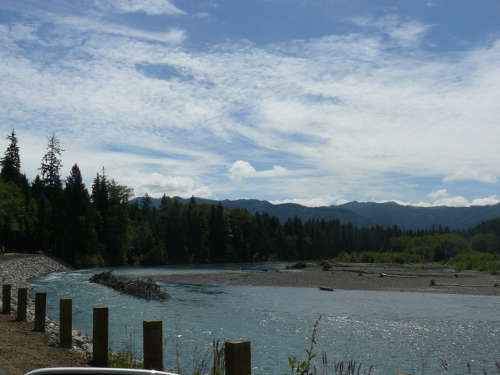 Location Taken: Hoh River, Olympic National Park, Washington
Location Taken: Hoh River, Olympic National Park, Washington
Time Taken: June 2008
Look at this lovely river!
The water is the stunning color you only get near the source, free of all the mud and debris usually accumulated. The mountains in the distance give the clue as to where it comes from.
And there’s those lovely large flat areas the river meanders around. Briefly visible during the summer, when the weather patterns dry out the local rainforest, and the snow on the mountains has finished the deluge of the thaw.
There’s some trees still hanging out on the sandbanks, ripped up during the last seasonal flood, waiting for the next.
Though really, it can’t get too high, all told. Else they’d never have built the road with only five to ten feet of elevation above the low summer water levels…

